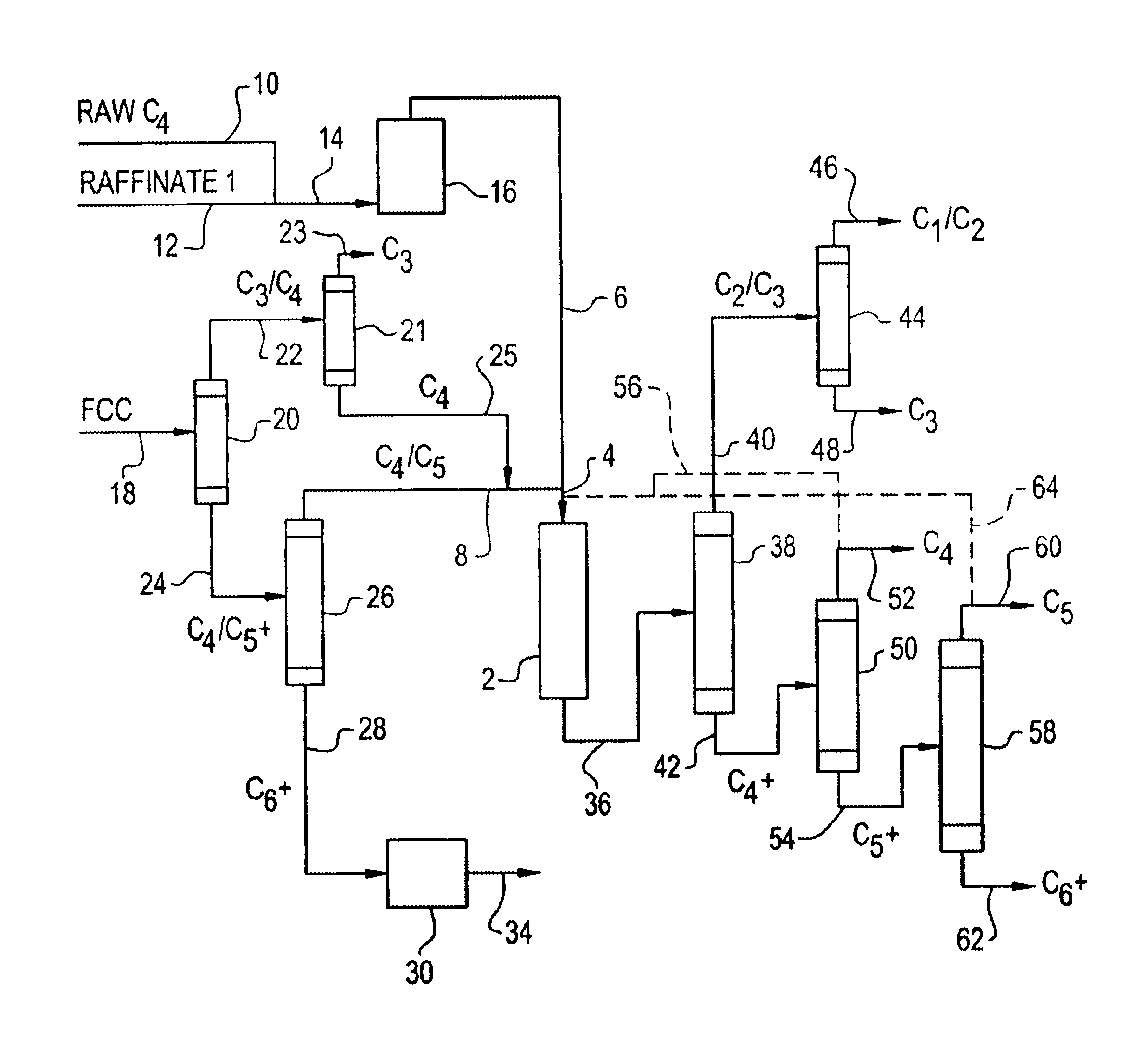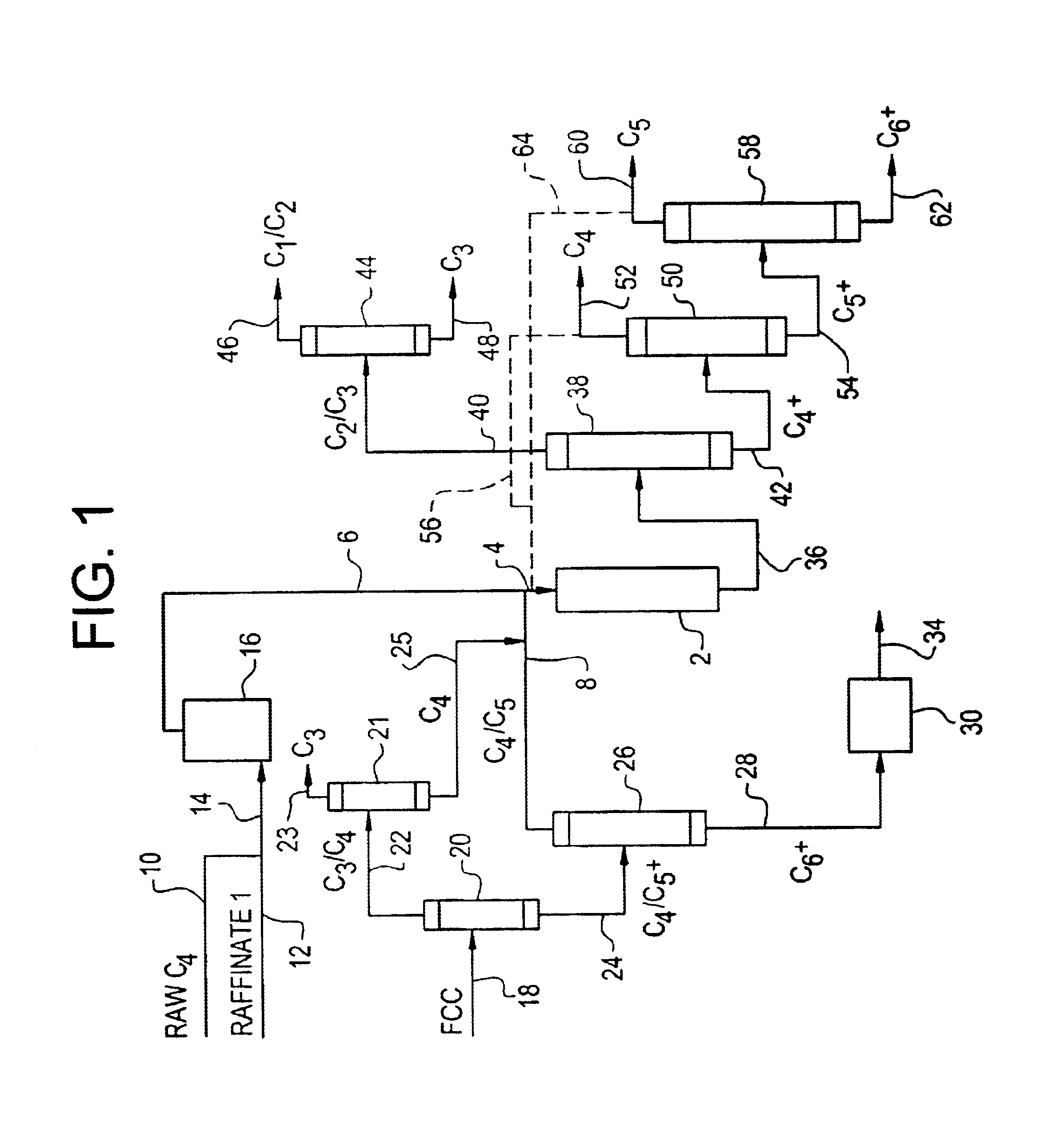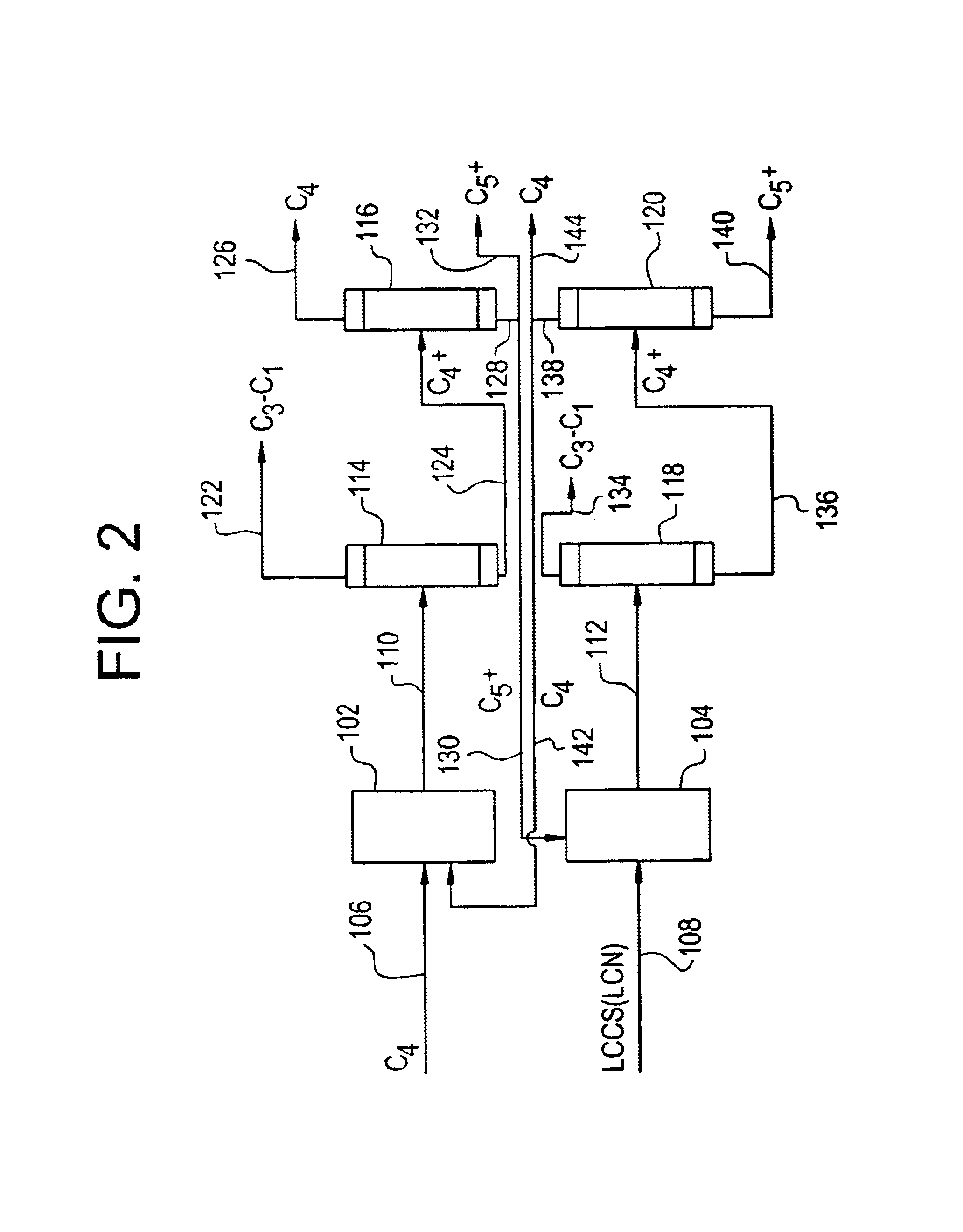Production of olefins
a technology of olefins and olefins, which is applied in the field of olefin production, can solve the problems of low yield, unstable conversion against time, and low stability of crystalline silicate catalysts
- Summary
- Abstract
- Description
- Claims
- Application Information
AI Technical Summary
Benefits of technology
Problems solved by technology
Method used
Image
Examples
Embodiment Construction
In accordance with the present invention, cracking of olefins is performed in the sense that olefins in a hydrocarbon stream are cracked into lighter olefins and selectively into propylene. The feedstock and effluent preferably have substantially the same olefin content by weight. Typically, the olefin content of the effluent is within ±15 wt %, more preferably ±10 wt %, of the olefin content of the feedstock. The feedstock may comprise any kind of olefin-containing hydrocarbon stream. The feedstock may typically comprise from 10 to 100 wt % olefins and furthermore may be fed undiluted or diluted by a diluent, the diluent optionally including a non-olefinic hydrocarbon. In particular, the olefin-containing feedstock may be a hydrocarbon mixture containing normal and branched olefins in the carbon range C4 to C10, more preferably in the carbon range C4 to C6, optionally in a mixture with normal and branched paraffins and / or aromatics in the carbon range C4 to C10. Typically, the olef...
PUM
| Property | Measurement | Unit |
|---|---|---|
| inlet temperature | aaaaa | aaaaa |
| molar ratio | aaaaa | aaaaa |
| temperature | aaaaa | aaaaa |
Abstract
Description
Claims
Application Information
 Login to View More
Login to View More - R&D
- Intellectual Property
- Life Sciences
- Materials
- Tech Scout
- Unparalleled Data Quality
- Higher Quality Content
- 60% Fewer Hallucinations
Browse by: Latest US Patents, China's latest patents, Technical Efficacy Thesaurus, Application Domain, Technology Topic, Popular Technical Reports.
© 2025 PatSnap. All rights reserved.Legal|Privacy policy|Modern Slavery Act Transparency Statement|Sitemap|About US| Contact US: help@patsnap.com



